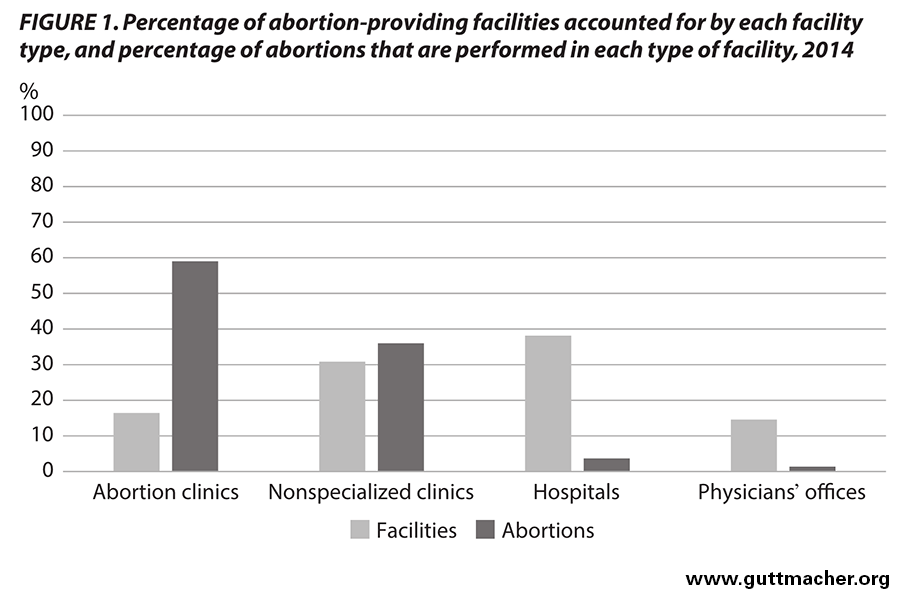CONTEXT
National and state-level information about abortion incidence can help inform policies and programs intended to reduce levels of unintended pregnancy.
METHODS
In 2015–2016, all U.S. facilities known or expected to have provided abortion services in 2013 or 2014 were surveyed. Data on the number of abortions were combined with population data to estimate national and state-level abortion rates. The number of abortion-providing facilities and changes since a similar 2011 survey were also assessed. The number and type of new abortion restrictions were examined in the states that had experienced the largest proportionate changes in clinics providing abortion services.
RESULTS
In 2014, an estimated 926,200 abortions were performed in the United States, 12% fewer than in 2011; the 2014 abortion rate was 14.6 abortions per 1,000 women aged 15–44, representing a 14% decline over this period. The number of clinics providing abortions declined 6% between 2011 and 2014, and declines were steepest in the Midwest (22%) and the South (13%). Early medication abortions accounted for 31% of nonhospital abortions, up from 24% in 2011. Most states that experienced the largest proportionate declines in the number of clinics providing abortions had enacted one or more new restrictions during the study period, but reductions were not always associated with declines in abortion incidence.
CONCLUSIONS
The relationship between abortion access, as measured by the number of clinics, and abortion rates is not straightforward. Further research is needed to understand the decline in abortion incidence.

